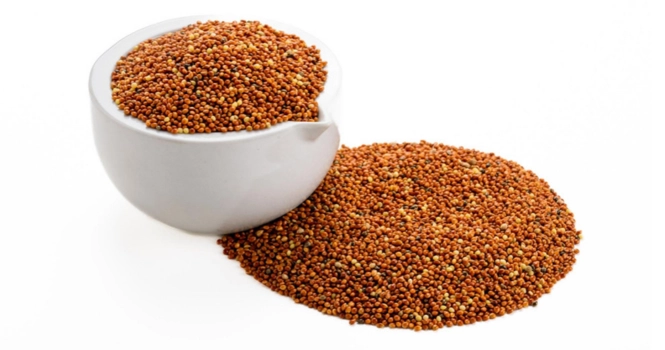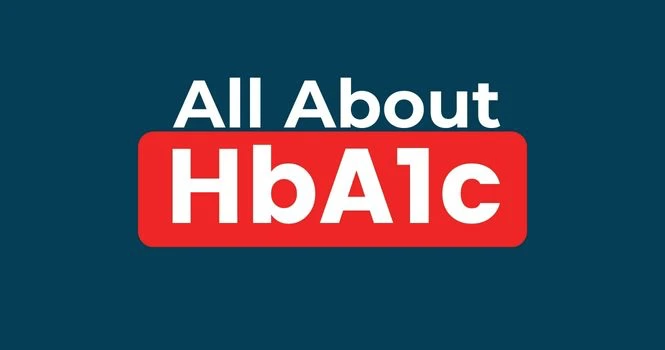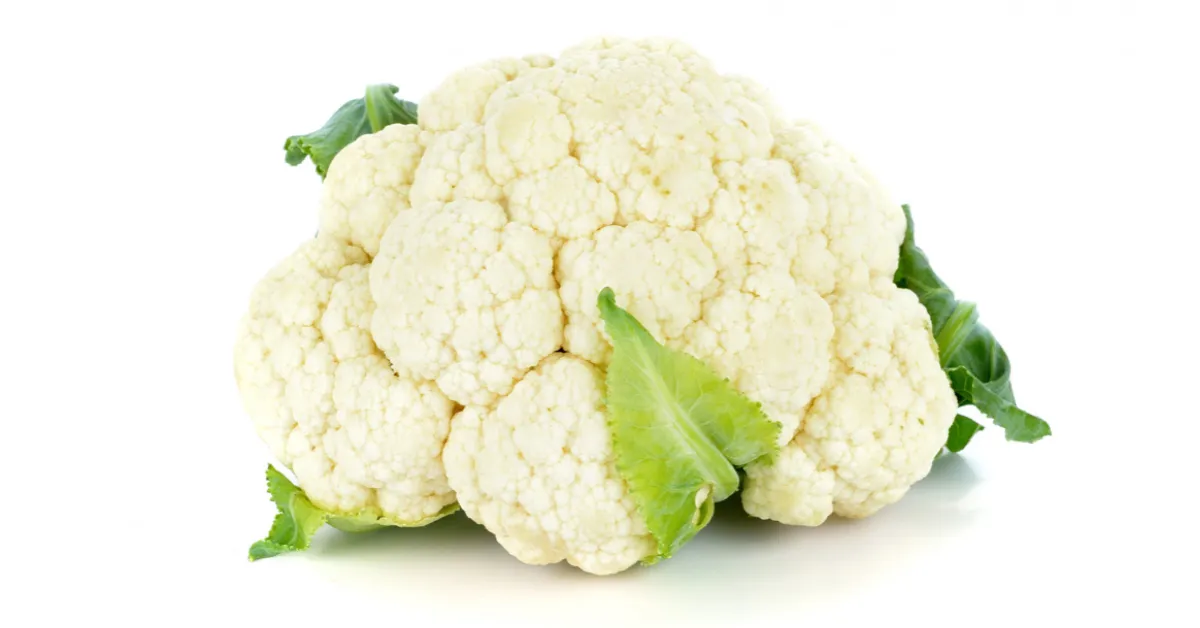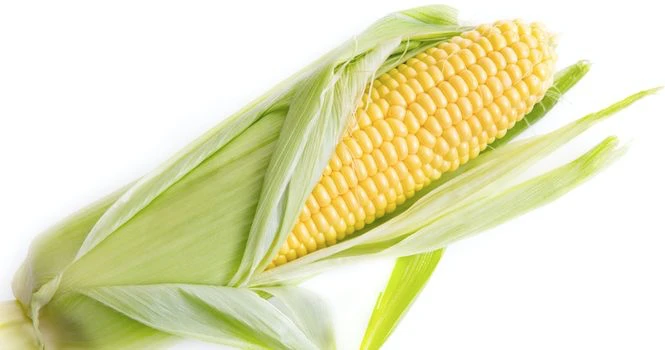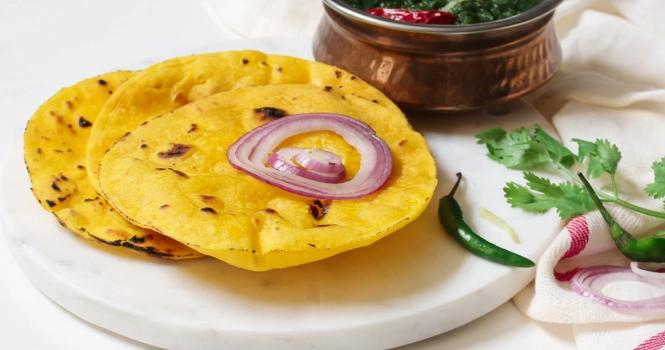Ragi, also known as finger millet, is a nutritious grain that has been a staple in various diets for centuries. Its rising popularity in health-conscious communities stems from its rich nutritional profile and potential health benefits.
Crucial to these benefits is ragi’s glycemic index (GI), a measure that indicates the effect of foods on blood sugar levels.
Understanding the glycemic index of ragi is essential for those looking to maintain a balanced diet, particularly for individuals with diabetes or those monitoring their blood sugar levels.
This article delves into the details of ragi’s glycemic index, exploring how this ancient grain can be a valuable addition to a health-oriented diet.
Other names for Ragi
Ragi, a widely consumed grain in various parts of the world, is known by several other names depending on the region and language. Some of these alternative names include:
1. Finger Millet – Common name in English-speaking countries.
2. Eleusine coracana – Its scientific name.
3. Nachni or Nagali – Commonly used in parts of India, especially in Maharashtra and Goa.
4. Ragi – Widely used in South India.
5. Kezhvaragu or Keppai – Names used in Tamil Nadu, India.
6. Ragi Chodi – Name used in certain parts of North India.
7. Madua or Mandia – Used in parts of eastern India, like Bihar and Odisha.
8. Bavto – Name used in some regions of Gujarat, India.
9. Dagusa or Dakussa – Names used in parts of Africa.
10. Wimbi – Name used in East Africa, particularly in Tanzania and Kenya.
These names reflect the grain’s widespread cultivation and integration into diverse culinary traditions across the globe.
Nutritional value in Ragi (Finger Millet) per 100 grams
| Nutrients | Amount | Daily Value (%) |
| Energy | 328 kcal | – |
| Protein | 7.3 g | – |
| Fat | 1.3 g | – |
| Carbohydrate | 72 g | – |
| Dietary Fiber | 3.6 g | – |
| Calcium | 344 mg | 34% |
| Iron | 3.9 mg | 22% |
Is Ragi good for Diabetics?
Yes, ragi (finger millet) is generally considered good for diabetics due to its low glycemic index (GI). This means that it has a slower rate of increasing blood sugar levels compared to high-GI foods. Here are some reasons why ragi is beneficial for diabetics:
1. Low Glycemic Index: Foods with a low glycemic index release glucose slowly and steadily into the bloodstream, preventing sudden spikes in blood sugar levels, which is crucial for diabetes management. For a broader look at how other millets can aid in slimming down, see our guide on Unlocking the Best Millet for Weight Loss: A Grainy Guide to Fitness.
2. High Fiber Content: Ragi is rich in dietary fiber, which slows down the digestion process and aids in the gradual release of sugar into the bloodstream.
3. Complex Carbohydrates: The presence of complex carbohydrates in ragi takes longer to digest, leading to a slower release of glucose, which is beneficial for blood sugar control.
4. Nutrient-Rich: Ragi is packed with essential nutrients like magnesium, which has been shown to improve insulin response and reduce insulin resistance.
5. Keeps You Full: The high fiber content in ragi can also help in controlling hunger pangs and prevent overeating, which is beneficial for weight management — an important aspect of diabetes management.
6. Gluten-Free: Being gluten-free, ragi is a good grain alternative for diabetics with gluten intolerance or celiac disease.
However, it’s important for diabetics to monitor their portion sizes and overall carbohydrate intake, even with healthier grains like ragi. It’s always a good practice to consult with your doctor or a dietitian for personalized dietary advice.
Health Benefits of Ragi or Finger Millets
Ragi, also known as finger millet, is a highly nutritious grain with numerous health benefits, making it a valuable addition to a balanced diet. Here are some of the key health benefits of ragi:
1. High Nutritional Value: Ragi is rich in essential nutrients like protein, iron, calcium, and dietary fibers, making it a wholesome food for all age groups.
2. Good for Bone Health: With its high calcium content, ragi is excellent for strengthening bones, making it beneficial for children, women (especially post-menopause), and the elderly.
3. Controls Diabetes: Due to its low glycemic index, ragi helps in controlling blood sugar levels, making it a good dietary choice for diabetics.
4. Aids in Weight Loss: The high dietary fiber content in ragi gives a feeling of fullness, reduces food cravings, and aids in weight management.
5. Reduces Cholesterol: Ragi contains amino acids like Methionine and Lecithin which help in reducing cholesterol levels by eliminating excess fat from the liver.
6. Gluten-Free: Ragi is naturally gluten-free, making it an excellent grain alternative for those with gluten intolerance or celiac disease.
7. Rich in Antioxidants: The antioxidants present in ragi can help combat oxidative stress and reduce the risk of chronic diseases.
8. Good for Digestive Health: The dietary fiber in ragi assists in digestion and prevents constipation, making it beneficial for gut health.
9. Promotes Heart Health: Regular consumption of ragi can help in preventing cardiovascular diseases due to its ability to lower high blood pressure and cholesterol.
10. Good for Anemia: Being a good source of iron, ragi can help in improving hemoglobin levels and is beneficial for individuals with anemia.
11. Improves Skin Health: The vital amino acids and antioxidants in ragi can play a role in skin care and anti-aging.
12. Energy Booster: Ragi is a good source of natural iron and complex carbohydrates, providing a steady source of energy, especially for athletes and active individuals.
Including ragi in your diet can be beneficial in many ways, contributing to overall health and well-being. However, it’s always advisable to consume it in moderation and as part of a varied diet.

Best Ways to consume Ragi or Finger Millets
Ragi is a versatile grain that can be incorporated into various dishes, making it easy and enjoyable to consume. Here are some of the best ways to include ragi in your diet:
1. Ragi Porridge: A popular breakfast option, especially for babies and the elderly. It’s made by cooking ragi flour with water or milk and can be sweetened with jaggery or honey and flavored with cardamom.
2. Ragi Roti/Flatbread: Ragi flour can be used to make nutritious rotis or flatbreads, often mixed with vegetables and spices for added flavor.
3. Ragi Dosa: A healthier alternative to traditional dosa, made with ragi flour mixed with rice flour or urad dal. It’s a great option for a wholesome breakfast or snack.
4. Ragi Malt: A nutritious drink made from ragi flour, water/milk, and sweeteners. It can be a refreshing and healthy beverage, especially in summers.
5. Ragi Idli: Similar to dosa, ragi can be used to make idlis, which are steamed, making them a low-fat, healthy meal option.
6. Ragi Cookies and Bakes: Ragi flour can be used in baking cookies, cakes, and bread, providing a healthier, nutrient-rich baked good.
7. Ragi Halwa or Pudding: A sweet dish made from ragi flour, ghee, sugar or jaggery, and milk or coconut milk, flavored with cardamom and nuts.
8. Ragi Balls (Ragi Mudde): A traditional dish in Karnataka, India, where ragi flour is cooked to a dough-like consistency and then rolled into balls, often eaten with green leafy vegetables or meat curries.
9. Ragi Pancakes: A healthy twist to regular pancakes, using ragi flour mixed with whole wheat flour, eggs, and milk.
10. Ragi Sprouts: Sprouted ragi is more nutritious and can be used in salads or as a cereal.
11. Ragi Soup: A healthy and comforting option, especially in winters. You can add vegetables and spices to enhance its nutritional value.
Remember, while ragi is nutritious, it’s important to consume it in moderation as part of a balanced diet. Experimenting with these different ways of preparing ragi can help keep your meals interesting and healthful.
Glycemic Index of Ragi Preparations
The Glycemic Index (GI) is a relative ranking of carbohydrate in foods according to how they affect blood glucose levels. Carbohydrates with a low GI value (55 or less) are more slowly digested, absorbed, and metabolized and cause a lower and slower rise in blood glucose and, therefore insulin levels.
The following is a brief review of the glycemic index, serving sizes, and estimated calorie content for various ragi (finger millet) preparations, as well as comparisons with other grains like rice, wheat, jowar (sorghum), and bajra (pearl millet).
1. Glycemic Index of Ragi vs. Rice:
– Ragi: Ragi generally has a lower GI, typically in the range of 50-68.
– Rice: White rice usually has a higher GI, around 70-100.
2. Glycemic Index of Rice, Wheat, Ragi:
– Rice: GI around 70-100.
– Wheat: Whole wheat typically has a GI around 49-69.
– Ragi: GI around 50-68.
3. Ragi Roti:
– GI: Approximately 50-68.
– Serving Size: 1 medium-sized roti (30-40 g).
– Calories: About 80-120 calories per roti.
4. Ragi Flour:
– GI: Similar to whole ragi, around 50-68.
– Serving Size: 100 g.
– Calories: About 320-360 calories per 100 g.
5. Ragi Dosa:
– GI: Approximately 50-70, depending on preparation.
– Serving Size: 1 medium dosa (50-70 g).
– Calories: About 100-150 calories per dosa.
6. Ragi Mudde:
– GI: Approximately 50-68.
– Serving Size: 1 medium ball (100-120 g).
– Calories: About 200-240 calories per mudde.
7. Glycemic Index of Jowar, Bajra, Ragi:
– Jowar: GI around 55-70.
– Bajra: GI around 54-68.
– Ragi: GI around 50-68.
8. Ragi Flakes:
– GI: Approximately 55-70.
– Serving Size: 30 g (1 cup).
– Calories: About 100-120 calories per cup.
9. Ragi Idli:
– GI: Approximately 50-65.
– Serving Size: 1 medium idli (30-40 g).
– Calories: About 30-50 calories per idli.
10. Ragi Semiya:
– GI: Approximately 50-68.
– Serving Size: 100 g (cooked).
– Calories: About 350-380 calories per 100 g cooked semiya.
It’s important to note that these GI values and calorie counts can vary based on preparation methods and specific ingredients used.
Additionally, individual responses to carbohydrates can differ, so these values should be used as a general guide. For specific dietary advice, it is always best to consult with a nutritionist or your doctor.
Frequently Asked Questions
Which millet has lowest glycemic index?
Millets are generally known for their low glycemic index (GI) compared to many other grains, making them a great choice for blood sugar management. However, the GI can vary based on the type of millet, its processing, and how it’s cooked. Here’s a list of some common millets along with their approximate glycemic index:
1. Finger Millet (Ragi): GI around 50-68.
– It has a relatively low GI, beneficial for blood sugar control.
2. Foxtail Millet: GI around 50-68.
– Similar to finger millet, foxtail millet is also known for its low GI.
3. Pearl Millet (Bajra): GI around 54-70.
– Pearl millet has a moderately low GI, making it suitable for diabetic diets.
4. Sorghum (Jowar): GI around 54-70.
– Sorghum also falls in the lower range of the glycemic index, similar to pearl millet.
5. Barnyard Millet: GI around 41-60.
– This millet has one of the lowest GI values among all millets, making it an excellent choice for managing blood sugar levels.
6. Little Millet: GI around 52-67.
– Little millet’s GI is relatively low, similar to other millets.
7. Kodo Millet: GI around 55-70.
– The glycemic index of Kodo millet is in the moderate range.
8. Proso Millet: GI around 70-72.
– Proso millet has a higher GI compared to other millets, but it’s still lower than many refined grains.
It’s important to note that the glycemic index of millets can vary depending on the preparation method and what they are consumed with. For instance, cooking methods that involve soaking, fermenting, or adding high-fiber ingredients can lower the GI of these grains.
Also, combining millets with protein-rich or fat-rich foods can also help in reducing the overall glycemic impact.



